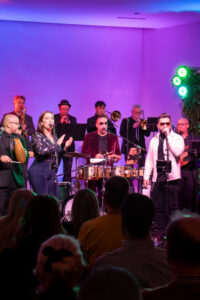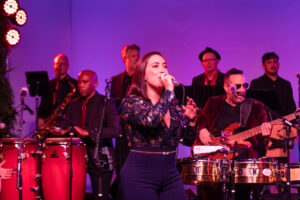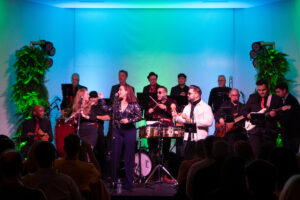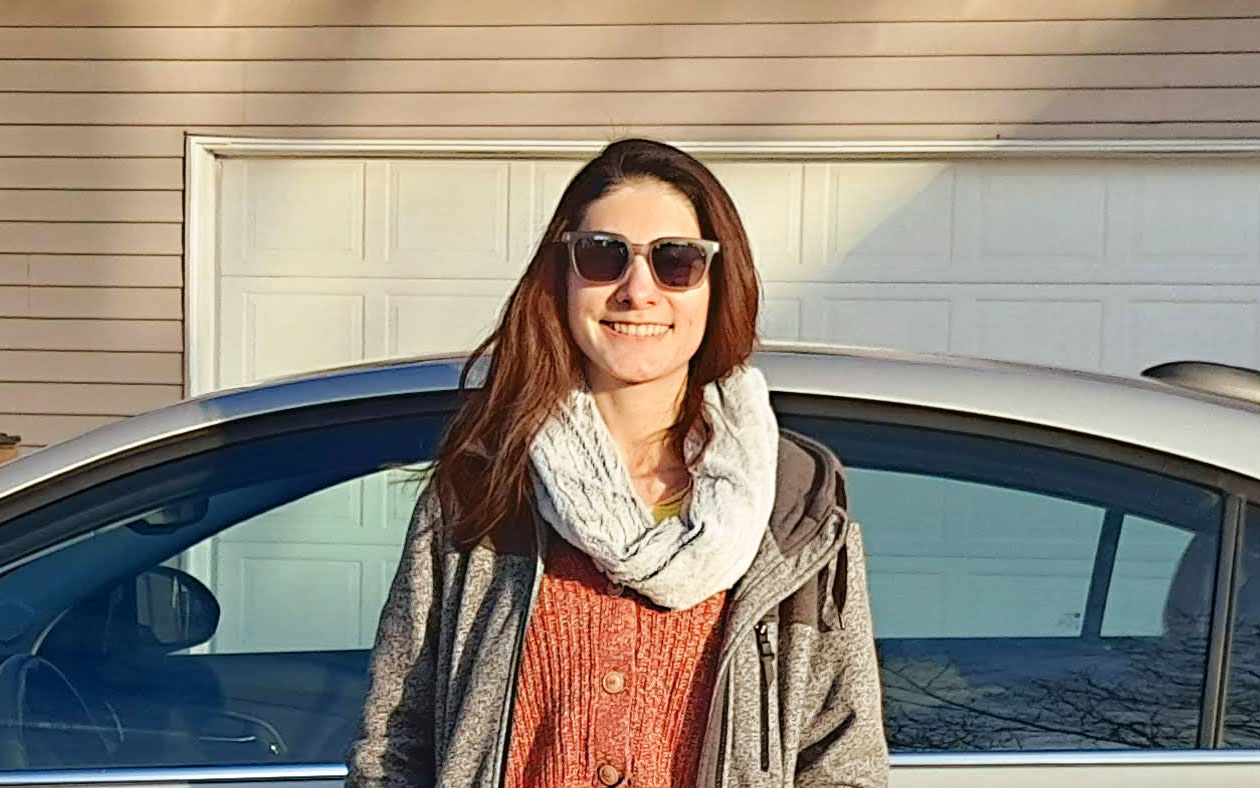Cheekwood's Winter Concert Series:
“Don’t stop, sigue sigue!”

What better way to interrupt the interval of freezing January nights than with a bit of combustion? The Music City Latin Orchestra’s performance is a heatstroke that must be experienced from start to finish. Its success is undeniable; Caribbean music at the Cheekwood Winter Concert Series is becoming a tradition. On this occasion, the demure gestures of the 2024 gathering were freed from any initial hesitations, and the seats were the only ones that did not succumb to the warmth. The orchestra set the clave, and the concert arrancó en fa! This opening was undoubtedly a warm-up for the cardio session that both musicians and audience members would soon endure. Conductor Giovanni Rodríguez introduced himself with rich improvisations on the timbales, which he then passed on to the towering sound of the trumpet. Only a brief interlude of words separated us from the unforgettable hit La Agarro Bajando, which, in the versatile timbre of Venezuelan singer Daniel Enrique, transported this moment straight to the turn of the millennium.
A warm adaptation of “Stand By Me” to the bachata rhythm could not be missed; the raspy voice of the saxophones in the introduction briefly concealed the island-inspired surprises that reshaped this version. Immediately after, another transformation. Although the popular reggaeton hit Despacito has been interpreted in countless ways, the salsa arrangement we heard felt fresh and, in my opinion, dissipated the sickening taste that the song usually leaves me with. The brass section expanded into a wide range of melodies that conversed with the voices, a task in which the guitar riffs in the original version fell short.

An extensive cha-cha-cha continued a concert that increasingly revealed a dialogue between tradition and jazz elements. While we remained in what felt like an authentic Havana dance hall, the wind section’s voicings flowed through the venue like New York’s air currents. In the serene atmosphere, each musician pushed their mastery to the limit, unveiling the secrets of their instrument. Just when it seemed everything had already been built up to the point of exhaustion, a glowing flute solo emerged, anchoring the audience to the comforting sounds of the 1950s. However, the time machine did not allow us for a gradual decompression, and adrenaline shot through the room with the inevitable millennial rumba anthem, El Tiburón. The dance hall transformed into a nightclub, and just as everyone was fully energized, a bolero suddenly pulled the handbrake.
We were back with a 1970s classic, Un Verano en Nueva York, and the dancing crowd looked like a flash mob; their steps, spins, and the overall dance conversation were not random—they knew exactly what they were doing. On a multicultural dance floor, the cliché that only Latinos know how to dance was shattered—there were couples so skilled that watching them was a delight. These rhythms are undoubtedly for active listening, and while moving a piacere is perfectly fine, something inside tickles, urging you to learn a little more. I want to believe that Nashville’s dance academies are thriving—dance is an extra bonus for fully enjoying the city’s incredible cultural scene.

I may sound old-school, but it’s possible to argue with substance that today’s reggaeton offers very little. Just listening to the orchestra’s arrangement of Amargura confirmed that the original version is full of red flags. The talent and artistic quality of Marcela Pinilla are undeniable—so much so that I didn’t even realize she was singing a Karol G song. Without a doubt, the genius behind this arrangement contributed selflessly to musical upcycling. After this success, an instrumental spectacle followed, as if it were a Big Band overflowing with excellent improvisations, further accelerating the spontaneous dancers’ movements.
Just when I thought the concert was saving its final ace for the end, Marcela P. introduced a Colombian cumbia by Grupo Niche, La Canoa Ranchaa. Interestingly, this version deviated slightly from the salsa-like timbre of the original song, leaning instead toward a sound reminiscent of Lucho Bermúdez’s orchestras, making the cumbia sound more authentic. The musicians then returned to the Caribbean islands, specifically the Dominican Republic, and Bachata Rosa’s scent began filling the venue. Once again, I found myself wondering how many voices Daniel E. hides in his throat—his ability to adapt so naturally to each genre is astonishing. The orchestra continued with Mi Gente, this time in a female-led version featuring Marcela P.’s crystalline voice, who also engaged the audience in call-and-response interactions.
At this point, I must say that while the sound quality and microphone balance had improved, it still wasn’t enough to do justice to the clarity of the voices. Llorarás surprised the audience with an unexpected electric guitar solo that left nothing to the imagination—simply fantastic. The concert was nearing its end, and once again, I was pleasantly surprised by this experience when “La Rebelión” began to play, a hit ranked among the 50 greatest Colombian songs. At least four generations have enjoyed this salsa anthem, but I bet that only after listening to it several times do we truly grasp the meaning of that rebellion: an enslaved Black man raising his voice against the abuse of his Spanish master. This is not just any story—the region where this song originates, Bolívar Department, is home to San Basilio de Palenque, the first free town of formerly enslaved people in the Americas.
Each genre performed at this event contains a part of that rebellion that was disguised as rhythm and that, to this day, continues to be a means of seeking freedom.



